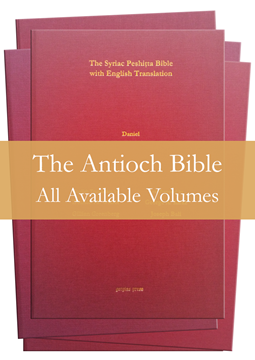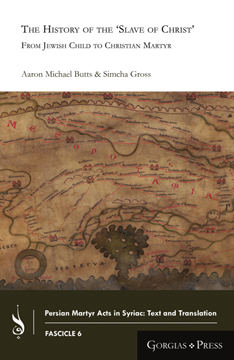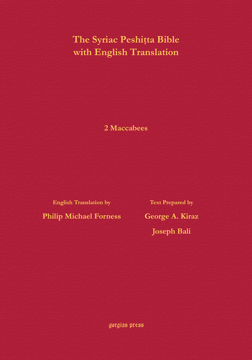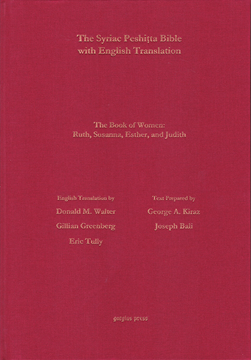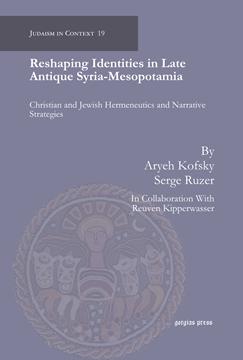Antioch Bible - All Available Volumes
Series: Surath Kthob
ISBN: AntiochBible_Bundle
Purchase all available volumes of the Antioch Bible at once and save on shipping! The Antioch Bible, a new bilingual edition of the Syriac Peshitta, makes the Syriac Bible available to the modern reader in an easy-to-read idiomatic English translation, with ample footnotes that point out literal expressions in the original Syriac. While the edition caters to the non-specialist, it is a particularly expansive tool in the repertoire of a specialist. In this set the specialist can easily consult the original text, fully pointed and vocalized, alongside the translation on facing pages.
Call for pricing
The History of the ‘Slave of Christ’
From Jewish Child to Christian Martyr
ISBN: 978-1-4632-0573-7
The first critical editions and English translations of the two Syriac recensions of a fascinating text which narrates the story of a young Jewish child, Asher. After converting to Christianity and taking the name ʿAḇdā da-Mšiḥā (‘slave of Christ’), he is martyred by his father. In a detailed introduction, Butts and Gross challenge the use of this text by previous scholars as evidence for historical interactions between Jews and Christians, reevaluating its purpose and situating the story in its Late Antique Babylonian context.
$67.00 (USD) $40.20 (USD)
2 Maccabees According to the Syriac Peshitta Version with English Translation
Series: Surath Kthob 14
ISBN: 978-1-4632-0587-4
This volume is part of a series of English translations of the Syriac Peshitta along with the Syriac text carried out by an international team of scholars.
$150.00 (USD) $90.00 (USD)
3-4 Maccabees and the Apocalypse of Baruch According to the Syriac Peshitta Version with English Translation
Series: Surath Kthob 15
ISBN: 978-1-4632-0588-1
This volume is part of a series of English translations of the Syriac Peshitta along with the Syriac text carried out by an international team of scholars.
$150.00 (USD) $90.00 (USD)
The Book of Women According to the Syriac Peshitta Version with English Translation
Ruth, Susanna, Esther, and Judith
English Translation by Donald M. Walter, Gillian Greenberg & Eric Tully; Text Prepared by George Anton Kiraz & Joseph Bali
Series: Surath Kthob 12
ISBN: 978-1-4632-0589-8
This volume is part of a series of English translations of the Syriac Peshitta along with the Syriac text carried out by an international team of scholars.
$150.00 (USD) $90.00 (USD)
Reshaping Identities in Late Antique Syria-Mesopotamia
Christian and Jewish Hermeneutics and Narrative Strategies
Series: Judaism in Context 19
ISBN: 978-1-4632-0590-4
This volume presents case studies of the phenomena that contributed to group identity in late antique Syria-Mesopotamia, in particular traditions reflecting interactions between Judaism and Christianity, among various Christian groups, and among other religious traditions of late antiquity (such as Zoroastrianism or 'paganism'). By studying Christian, Jewish and other sources that deal with the establishment, modification and deletion of boundaries, the authors seek to create a frame of reference that will in turn explain and contextualise the existing evidence concerning communication and interaction between highly diverse groups in Late Antiquity.
$151.00 (USD) $90.60 (USD)
